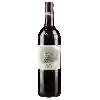
Château Lamothe de HauxFilius Bordeaux Rouge
This wine is a blend of 2 varietals which are the Cabernet-Sauvignon and the Merlot.
In the mouth this red wine is a powerful with a nice balance between acidity and tannins.
This wine generally goes well with poultry, beef or veal.
Taste structure of the Filius Bordeaux Rouge from the Château Lamothe de Haux
Light | Bold | |
Smooth | Tannic | |
Dry | Sweet | |
Soft | Acidic |
In the mouth the Filius Bordeaux Rouge of Château Lamothe de Haux in the region of Bordeaux is a powerful with a nice balance between acidity and tannins.
Wine flavors and olphactive analysis
Food and wine pairings with Filius Bordeaux Rouge
Pairings that work perfectly with Filius Bordeaux Rouge
Original food and wine pairings with Filius Bordeaux Rouge
The Filius Bordeaux Rouge of Château Lamothe de Haux matches generally quite well with dishes of beef, veal or poultry such as recipes of sautéed pork with pineapple, calf's head with sauce ravigote or peach and apricot chicken (about 270 calories).
Details and technical informations about Château Lamothe de Haux's Filius Bordeaux Rouge.
Discover the grape variety: Cabernet-Sauvignon
Cabernet-Sauvignon noir is a grape variety that originated in France (Bordeaux). It produces a variety of grape specially used for wine making. It is rare to find this grape to eat on our tables. This variety of grape is characterized by small bunches, and small grapes. Cabernet-Sauvignon noir can be found in many vineyards: South-West, Loire Valley, Languedoc & Roussillon, Cognac, Bordeaux, Armagnac, Rhone Valley, Provence & Corsica, Savoie & Bugey, Beaujolais.
Last vintages of this wine
The best vintages of Filius Bordeaux Rouge from Château Lamothe de Haux are 0
Informations about the Château Lamothe de Haux
The Château Lamothe de Haux is one of of the world's greatest estates. It offers 16 wines for sale in the of Bordeaux to come and discover on site or to buy online.
The wine region of Bordeaux
Bordeaux, in southwestern France, is one of the most famous, prestigious and prolific wine regions in the world. The majority of Bordeaux wines (nearly 90% of the production Volume) are the Dry, medium and Full-bodied red Bordeaux blends for which it is famous. The finest (and most expensive) are the wines of the great châteaux of Haut-Médoc and the right bank appellations of Saint-Émilion and Pomerol. The former focuses (at the highest level) on Cabernet Sauvignon, the latter on Merlot.
The word of the wine: Soft
Sweet wine containing between 30 and 50 grams of residual sugar. A sweet wine is made from very ripe grapes but without being affected by botrytis cinerea and without being raisined. This term can also be applied to a dry wine that is smooth and fat in the mouth.














